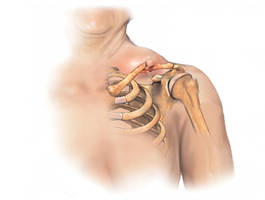
In all cases, the person should not be moved unless there is danger in the immediate surroundings. Basic first aid requires that the injured bone should not be pushed back or realigned. Furthermore, it should be immobilized. Soft padding and slings should be given to support the position chosen by the person. Ice should be applied to the fractured or dislocated area. These should reduce swelling and pain. The rescuer should always check and monitor for circulation, making sure that the injured area has continuous blood flow or nerve feelings. Emergency medical assistance should be called for immediately. Fracture injuries vary in first aid treatment. This is because of the location and different shapes on the bones in the body.
Jaw and other facial fractures can prove to be potentially serious. Usually, fractures in this area connote head injury or serious eye injury. Airway difficulties are at risk because a fractured jaw may lead to inability to swallow due to bleeding in the mouth. If the person is unconscious but breathing normally, position the patient so they may be on their sides but in a supported position. Immediately call for emergency medical assistance. If the person is conscious, let the person rest in the most comfortable position for him/ her. Give the person a clean pad or tissue to clean the blood, mucus or saliva. If the jaw looks broken or dislocated, the person may support the injured area with one or both hands.
Treatment for fractured collarbone and dislocated shoulder joint are similar because there is disturbance of the shoulder joint and there is a need to support the weight of the arm. There is a tendency for the person to lower the shoulder of the injured side with head slanted in the direction of the injury. Folded clothing or a pillow may be utilized to support the arm’s weight in a position comfortable for the person. Do not move the arm. Add soft paddings under the armpit and put either an elevation sling or arm sling.
Fracture ribs may involve a lone rib or a number of broken ribs. If
a person has fractured his/ her ribs, there is pain in simple actions such as breathing and coughing. Occasionally, abnormal movement may be observed when the chest moves outwards when the matching part on the counter side moves inward. Aid the person into the most comfortable position for him/ her. Padding should be improvised over the fractured ribs when severe pain is felt. To stabilize the moving section of the internal damage, a broad-fold triangular bandage may be used to safeguard the arm to the chest wall over the padding. To support the arm on the injured side, an elevation sling is used.
Although these injuries are not the most common, medical assistance is definitely required. The sooner first aid is performed on victims, the lesser the extent of the damage. Through first aid training and various other workplace approved programs, the lay person can provide to victims to minimalize pain.

How to tk care of such fractures…especially clavical fracture